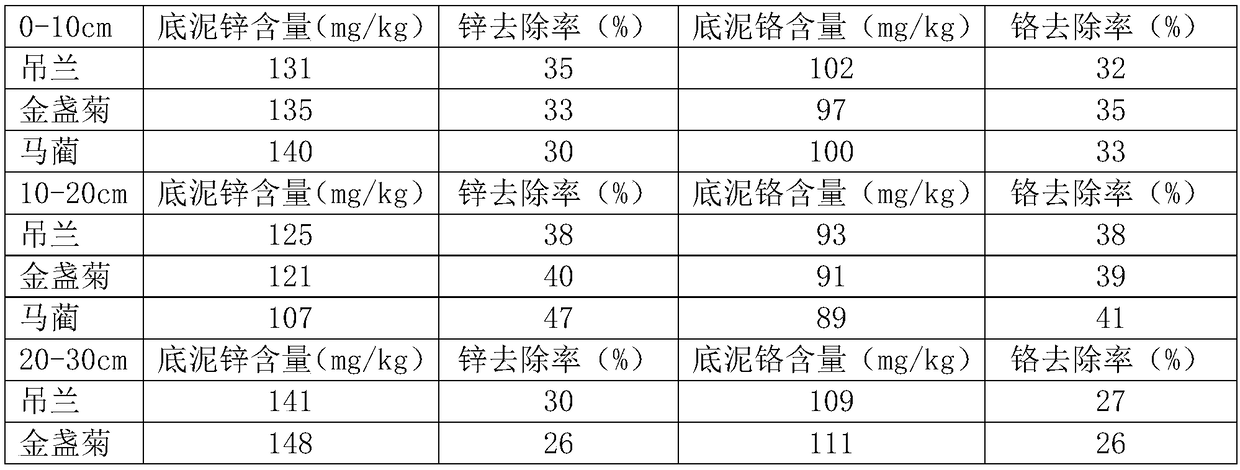A resource utilization method for polluted deposit
A technology for polluting sediment and recycling it, applied in chemical instruments and methods, water pollutants, sludge treatment, etc., to achieve the effects of simple process, short effect time and low cost
- Summary
- Abstract
- Description
- Claims
- Application Information
AI Technical Summary
Problems solved by technology
Method used
Image
Examples
Embodiment Construction
[0025] The technical solutions of the present invention will be further described in detail below in conjunction with specific embodiments.
[0026] 1. Use cement to build the anti-seepage pool, the anti-seepage pool is 2m×2m, and the pool height is 0.8m.
[0027] 2. Salvage the bottom mud and put it in the seepage tank. The bottom mud is 0.5m high, and dry the polluted bottom mud to 70% of the maximum content.
[0028] 3. Add heavy metals zinc and chromium, organic pollutants phenanthrene and pyrene to the bottom mud, and artificially shape the polluted bottom mud. The addition amount is zinc (ZnNO3) 200mg / kg, chromium (K2Cr2O7) 150mg / kg, phenanthrene 100mg / kg, pyrene 100mg / kg. Dissolve these pollutants in water first, then add them to the bottom mud, and finally stir the bottom mud to ensure that the pollutants are evenly distributed in the bottom mud.
[0029] 4. Add 100kg of decomposed straw to each seepage tank, and stir it to fully mix it with the bottom mud.
[0030]...
PUM
 Login to View More
Login to View More Abstract
Description
Claims
Application Information
 Login to View More
Login to View More - R&D
- Intellectual Property
- Life Sciences
- Materials
- Tech Scout
- Unparalleled Data Quality
- Higher Quality Content
- 60% Fewer Hallucinations
Browse by: Latest US Patents, China's latest patents, Technical Efficacy Thesaurus, Application Domain, Technology Topic, Popular Technical Reports.
© 2025 PatSnap. All rights reserved.Legal|Privacy policy|Modern Slavery Act Transparency Statement|Sitemap|About US| Contact US: help@patsnap.com


